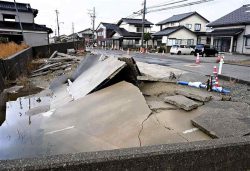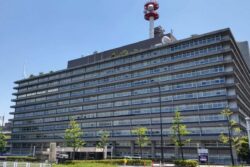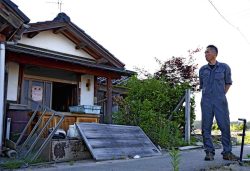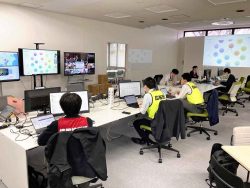Removal of Japan’s Noto Quake Debris Promises to Be Monumental Task; Damaged Roads Hinder Clearing Wreckage of Collapsed Homes
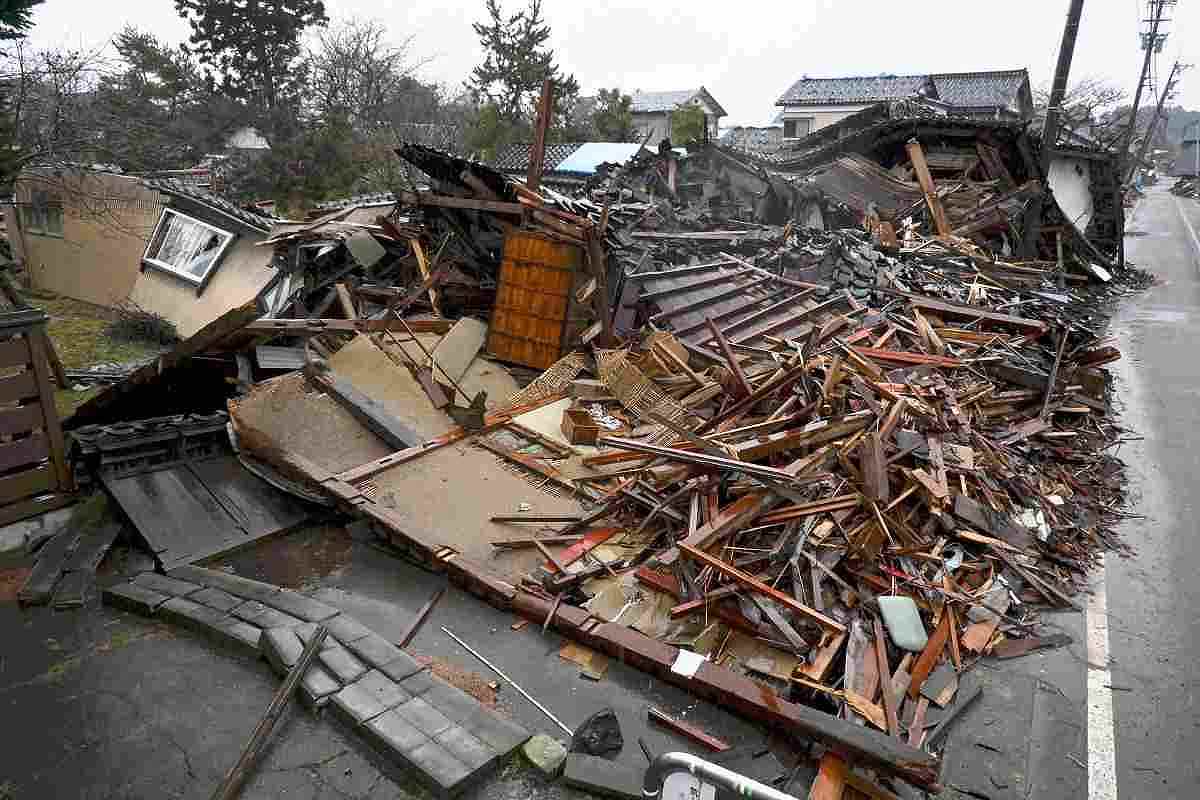
Heaped earthquake debris is seen in a residential area of Suzu, Ishikawa Prefecture, on Monday.
21:00 JST, February 6, 2024
Little progress has been made in disposing of waste generated by the Noto Peninsula Earthquake in areas hit by the disaster. The collapse of many old wooden houses generated a huge amount of waste while streets remain covered in debris more than a month after the earthquake, due to a combination of factors such as the suspension of waste incineration facilities, severed roads and a shortage of manpower.
Since delay in the disposal of disaster waste could hamper recovery and reconstruction efforts, it is necessary to address the issue as soon as possible through wide-area cooperation involving other municipalities.
Few bring waste
In Suzu, Ishikawa Prefecture, 40% of the city’s housing was completely destroyed in the earthquake. Collapsed houses are seen everywhere and some roads are blocked by toppled pillars and walls.
“With my neighborhood in such terrible condition, I don’t feel like I want to clean my place,” lamented a 66-year-old man who came from an evacuation center to see his house in the city’s Noroshi district on Monday.
In Suzu, acceptance of disaster waste began at a temporary collection site on Thursday. However, only a small number of residents have brought waste to the site, and there have been few cars on the road. After an earthquake registering upper 6 on the Japanese seismic intensity scale of 7 hit the city in May 2023, the line of vehicles waiting to get in stretched as much as 2 kilometers long. Suzu Mayor Masuhiro Izumiya said, “I think residents are not able to get the [damaged] furniture and other household items out of their houses because the houses themselves collapsed.”
In the four municipalities in the Okunoto area of Ishikawa Prefecture — Suzu, Wajima, Noto and Anamizu — the population is aging and many residents are still staying in evacuation centers. The Suzu municipal government started to accept volunteers solicited by the Ishikawa prefectural government Saturday. However, in dangerous places full of debris with damaged roads, the city can ask the volunteers to do only limited kinds of work. Amid the current lack of accommodation facilities, 10 to 15 volunteers make day trips to Suzu from Kanazawa and help clean houses that survived the earthquake. The city is extremely short-handed.
In Wajima, garbage collectors go house to house to pick up refuse. On Monday, two garbage collection trucks in the central part of the city became full of furniture, glass and other waste after visiting just four houses. When more affected houses are dismantled in the future, a large amount of waste will be generated, such as large timber materials. In that case, efforts to collect garbage and waste may fail to keep up with the speed of the increase.
64 times average yearly amount
According to the Ishikawa prefectural government, 52,326 houses, including ones that were vacant, were confirmed to have been destroyed or damaged as of Monday. In the four municipalities of the Okunoto area, the full picture of the damage has not been grasped yet, although 2,937 houses in Suzu are confirmed to have been destroyed.
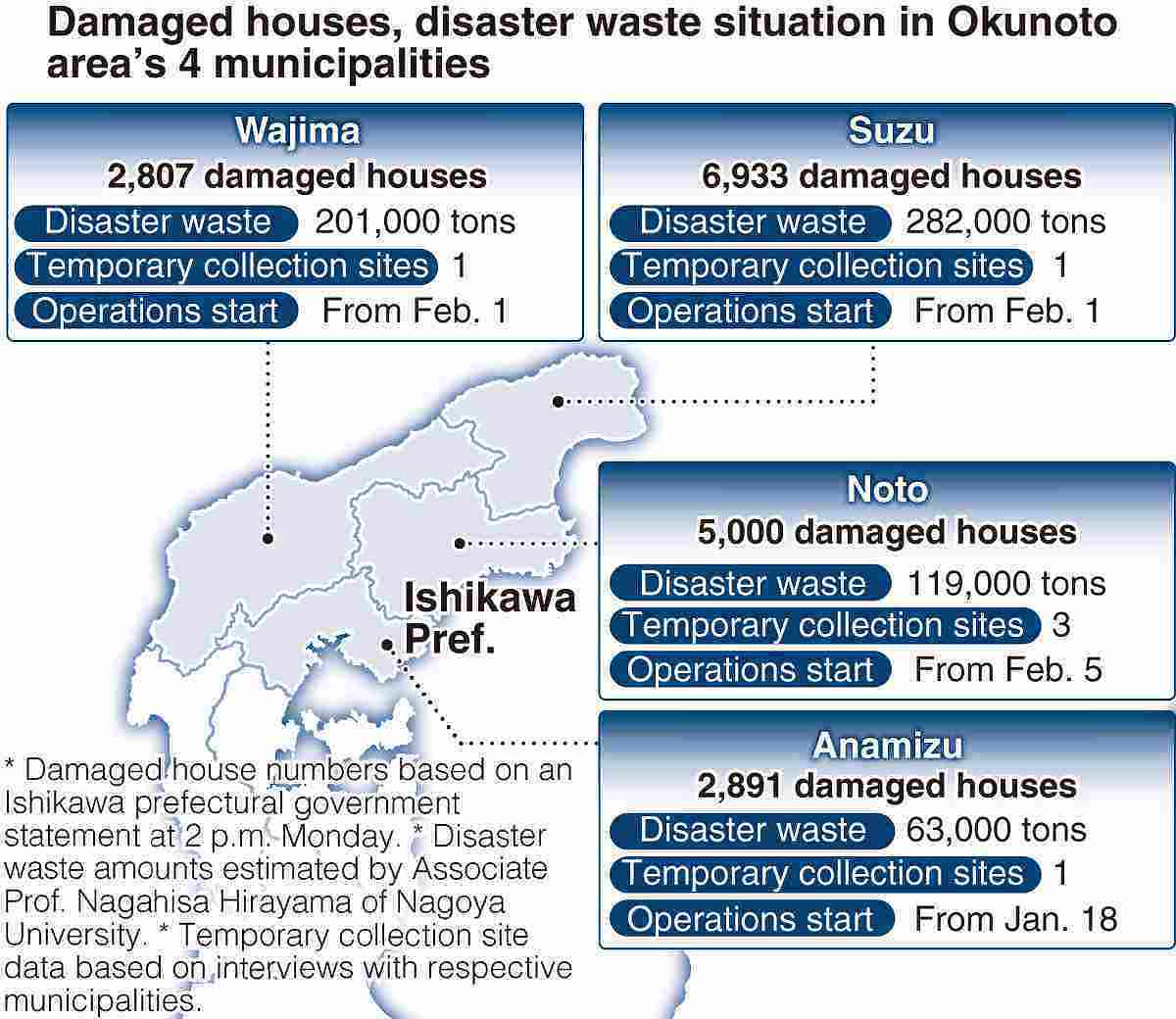
Nagahisa Hirayama, associate professor of disaster environmental engineering at Nagoya University, estimated the amounts of disaster waste generated by the latest earthquake by calculating the probable number of damaged and destroyed houses based on data such as the seismic intensities recorded in respective areas and the structures and ages of houses. According to the estimates, 806,000 tons of disaster waste were generated in Ishikawa Prefecture as a whole, 2.1 times the average yearly amount of waste produced in the prefecture. Over 80% of the estimated disaster waste is concentrated in the four municipalities of the Okunoto area. In Suzu, the estimated waste amounts to about 282,000 tons, 64.6 times the average yearly amount of waste produced in the city.
In the powerful 2016 earthquakes in Kumamoto Prefecture, about 3.11 million tons of disaster waste was generated, about 5.5 times the average yearly amount of domestic waste generated in all of Kumamoto Prefecture. The prefecture took about two years to dispose of all the waste. After the 2011 Great East Japan Earthquake, it took three years to dispose of the about 31 million tons of disaster waste, including sediment deposited by tsunami.
Sea transport
The Environment Ministry is putting more effort into promoting wide-area cooperation in which other municipalities share the burden of waste disposal by accepting and treating disaster waste. Severe damage to major roads is expected to hamper land transportation until the roads are fully restored. Therefore, the ministry began considering using sea transport in cooperation with the Land, Infrastructure, Transport and Tourism Ministry and the Ishikawa prefectural government. They are considering transporting waste that cannot be stored at temporary disposal sites in disaster-hit areas to other municipalities by ship.
Sea transport was also used in the Kumamoto earthquakes. In that case, waste from Kumamoto was transported by container ships to Osaka Port. Ultimately, about 503,000 tons of waste was treated outside Kumamoto Prefecture, or about 16% of the total disaster waste from the earthquakes. However, in the Noto Peninsula Earthquake, some ports were damaged by ground uplift, making the extent to which sea transport can be used uncertain.
“When the demolition of damaged houses fully starts, there will be unimaginable quantities of waste. We would like to ask for cooperation from the central government, other municipalities and volunteers at each stage of disposal, such as collection, transportation and incineration,” a senior official at the Ishikawa prefectural government said.
"Society" POPULAR ARTICLE
-

M4.9 Earthquake Hits Tokyo, Neighboring Prefectures
-

M7.5 Earthquake Hits Northern Japan; Tsunami Waves Observed in Hokkaido, Aomori and Iwate Prefectures
-

Tsukiji Market Urges Tourists to Avoid Visiting in Year-End
-

Israeli Tourists Refused Accommodation at Hotel in Japan’s Nagano Pref., Prompting Protest by Israeli Embassy and Probe by Prefecture
-
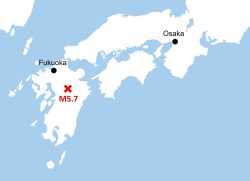
M5.7 Earthquake Hits Japan’s Kumamoto Pref., Measuring Upper 5 Intensity, No Tsunami Expected
JN ACCESS RANKING
-

Keidanren Chairman Yoshinobu Tsutsui Visits Kashiwazaki-Kariwa Nuclear Power Plant; Inspects New Emergency Safety System
-

Imports of Rare Earths from China Facing Delays, May Be Caused by Deterioration of Japan-China Relations
-

University of Tokyo Professor Discusses Japanese Economic Security in Interview Ahead of Forum
-

Japan Pulls out of Vietnam Nuclear Project, Complicating Hanoi’s Power Plans
-

Govt Aims to Expand NISA Program Lineup, Abolish Age Restriction


